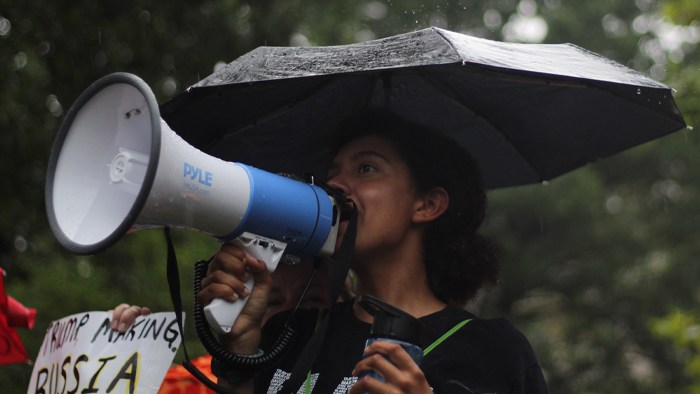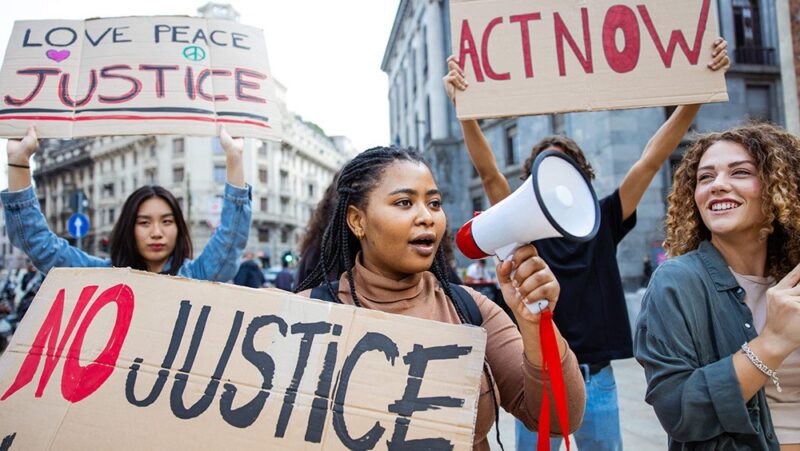The First Amendment Protects the Unsavory – and All of Us Too!

“It is a fair summary of history to say that the safeguards of liberty have frequently been forged in controversies involving not-very nice people.” So wrote Supreme Court Justice Felix Frankfurter in his dissenting opinion in United States v. Rabinowitz (1950). Albert Rabinowitz was a forger and his case involved the Fourth Amendment right to be free from unreasonable searches and seizures.
But the principle articulated by Justice Frankfurter applies with equal if not more force in First Amendment jurisprudence. Many of our most important First Amendment freedoms have been advanced in the name of hatemongers, flag burners and similar ilk.
Three examples come immediately to mind — Clarence Brandenburg, Gregory Lee Johnson and Fred Phelps.
Clarence Brandenburg burns a cross
Clarence Brandenburg was a Ku Klux Klan leader who, with about a dozen other members of his hateful tribe, burned a cross before a television reporter in Hamilton County, Ohio. Brandenburg gave a speech that butchered the English language a bit, including the line: “We’re not a revengent [sic] organization, but if our president, our Congress, our Supreme Court, continues to suppress the white, Caucasian race, it’s possible that there might have to be some revengeance [sic] taken.”
Charged and convicted of violating an Ohio criminal syndicalism law, the Supreme Court unanimously reversed his conviction, finding that there is a difference between hateful ideas and unlawful incitement. The court famously declared in Brandenburg v. Ohio (1969) that “the constitutional guarantees of free speech and free press do not permit a state to forbid or proscribe advocacy of the use of force or of law violation except where such advocacy is directed to inciting or producing imminent lawless action and is likely to incite or produce such action.”
The so-called Brandenburg or incitement test has protected many a political dissident or rabble-rouser through the years. It was truly a landmark free-speech precedent.
Gregory Lee Johnson burns a flag
Gregory Lee Johnson was a political protestor who took part in the so-called “Republican War Chest Tour” in Dallas, Texas — the site of the Republican presidential convention. Johnson and others protested the policies of President Ronald Reagan and some Dallas-based corporations.
While some protestors chanted “America, red, white and blue, we spit on you,” Johnson burned an American flag. The police arrested Johnson and charged him with violating a Texas flag desecration statute. A trial court convicted Johnson, but the Texas Court of Criminal Appeals reversed. On further appeal, the U.S. Supreme Court also ruled in Texas v. Johnson (1989) that the First Amendment protected Gregory Lee Johnson’s repugnant form of political protest.
In oft-cited language, Justice William Brennan wrote: “If there is a bedrock principle underlying the First Amendment, it is that the government may not prohibit the expression of an idea simply because society finds the idea itself offensive or disagreeable.” Brennan and four other justices realized that by protecting the repugnant act of Gregory Johnson, they were ensuring freedom for all. This “bedrock principle” of the First Amendment remains a shining light in First Amendment jurisprudence.
Fred Phelps leads hateful protests
Fred Phelps founded a group known as the Westboro Baptist Church, which somewhere along the way came upon the belief that God was killing America’s soldiers because the country tolerated and promoted homosexuality. Phelps and many of his children would travel around the country and picket near military members’ funerals. They would hold up hateful signs advocating their messages of intolerance.
They did so in Maryland at the funeral of slain Marine Matthew Snyder. Snyder’s father Albert later sued for intentional infliction of emotional distress and a federal jury agreed to the tune of more than $10 million. However, the U.S. Court of Appeals for the Fourth Circuit reversed on First Amendment grounds.
The U.S. Supreme Court agreed in Snyder v. Phelps (2011) that the First Amendment protected the awful speech of members of Westboro Baptist Church, who conveyed their hateful messages on matters of public concern but complied with police orders on distancing from the funeral.
In perhaps his most stirring passage, Chief Justice John G. Roberts, Jr. famously wrote:
Speech is powerful. It can stir people to action, move them to tears of both joy and sorrow, and, as it did here, inflict great pain. On the facts before us, we cannot react to that pain by punishing the speaker. As a nation we have chosen a different course — to protect even hurtful speech on public issues to ensure that we do not stifle public debate.
The First Amendment protected the likes of Clarence Brandenburg, Gregory Lee Johnson and Fred Phelps.
But thank God it does, because it also protects all of us.
David L. Hudson Jr. is a First Amendment fellow for the Freedom Forum and law professor at Belmont University who publishes widely on First Amendment topics. He is the author of several First Amendment books, including “Let The Students Speak!: A History of the Fight for Freedom of Expression in American Schools” (2011), “The First Amendment: Freedom of Speech” (Thomson Reuters, 2012) and a 12-lecture audio course, “Freedom of Speech: Understanding the First Amendment” (Now You Know Media, 2018).
15 Freedom of Assembly Examples You Should Know
Is Obscenity Protected by the First Amendment?
Related Content

